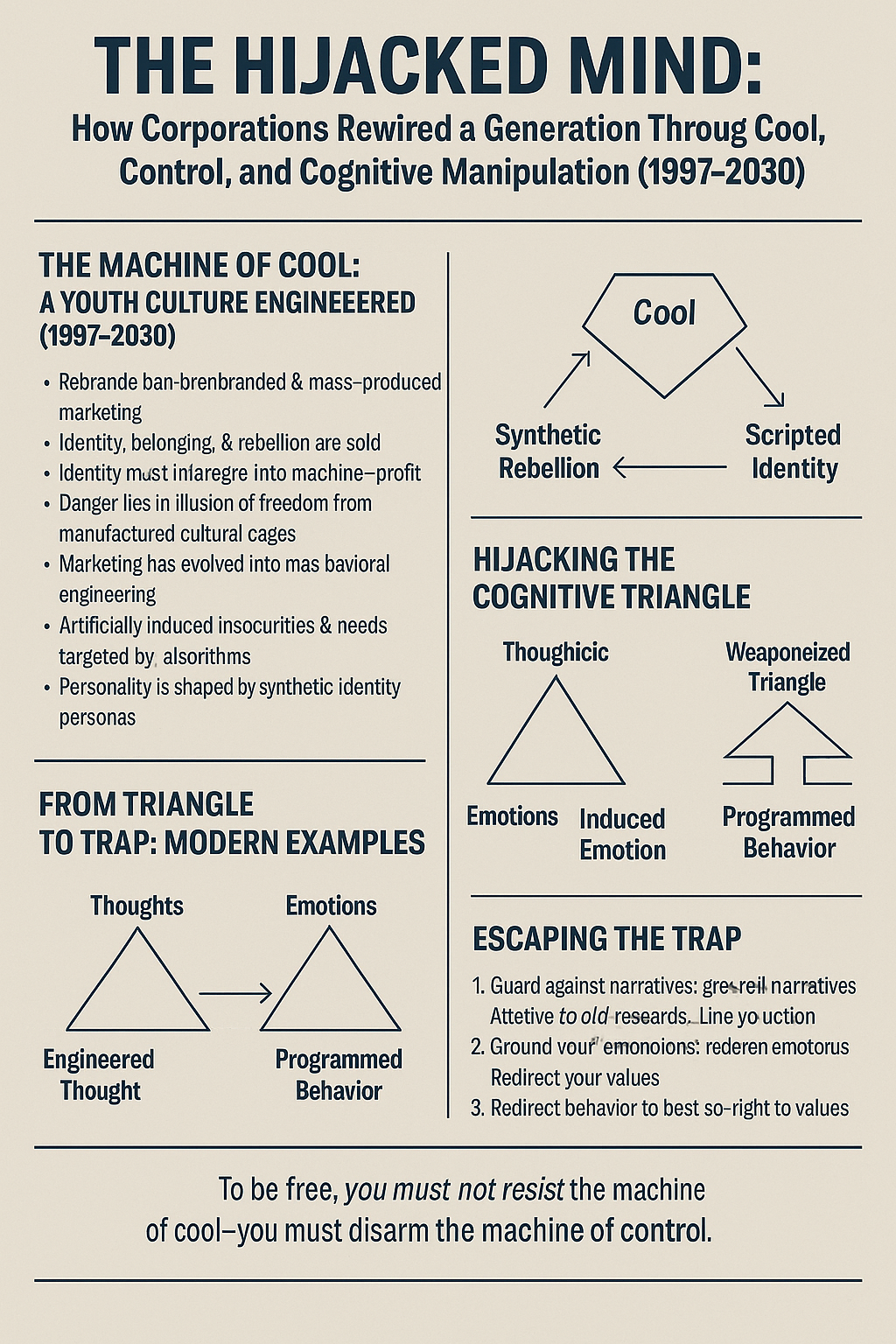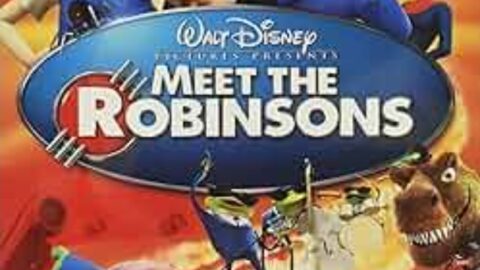Introduction: The Hidden Hand Behind Cool
Beginning in the late 1990s, youth rebellion was no longer a threat to corporate America—it was a product. Packaged and mass-produced, rebellion became the most profitable branding strategy ever devised. Media conglomerates, market researchers, and advertising agencies converged to colonize youth culture using the illusion of individuality and freedom. Beneath it all, a machine was humming: a feedback loop of manipulation, exploiting the very psychology it pretended to reflect.
From 1997 to 2030, generations of youth were transformed not by organic evolution but by commercial engineering. What they thought, felt, and did was increasingly shaped not by family, faith, or tradition—but by brands, influencers, and screens.
The Rise and Evolution of the Cool Machine
The Birth of a Market Empire (1997)
- 32 million American teenagers represented a multi-billion-dollar market.
- Parents, busier and more distracted, substituted attention with “guilt money.”
- This gave teens more spending autonomy and made them a prime target for advertisers.
The Blitzkrieg of Brands
- A typical teen in 1997 saw over 3,000 marketing messages a day.
- By 2025, teens are exposed to 10,000+ daily ads across smartphones, tablets, and streaming platforms.
- Control of youth culture shifted to just a few media conglomerates: from Viacom and Disney to Meta, Google, Netflix, and Tencent.
The Science of Selling Cool
- Marketers used anthropologists and social psychologists to observe teen behavior in the wild.
- “Cool hunting” became an industry: identify influencers (the 20%) and monetize their influence over the 80%.
- Subscription services like Look Look evolved into AI-powered algorithms mining social media data in real-time.
The Paradox of Cool
- As soon as something is branded “cool,” it dies.
- Thus, cool became a perpetual hunt: a never-ending cycle of discovery, commodification, and replacement.
Anti-Marketing Marketing
- Teens grew cynical of obvious marketing, so brands pretended to be anti-brand.
- Sprite, for example, mocked traditional ads while embedding itself deeper into youth culture.
- By 2025, entire campaigns are disguised as memes, influencer posts, or activism.
Manufactured Rebellion
- MTV, Viacom, and Interscope took real subcultures (like Rage Rock or hip-hop) and packaged them.
- Limp Bizkit and Insane Clown Posse were marketed as anti-establishment but were deeply embedded in the corporate machine.
Feedback Loops and Identity Engineering
- Culture became recursive: youth acted out what they saw, were filmed doing so, and had it sold back to them.
- TikTok, YouTube, and Instagram intensified this loop to hyper-speed by 2025.
Sexualization and Sensationalism
- From Dawson’s Creek to Euphoria, networks abandoned family shows for shock value.
- The sexualization of youth became a marketing tool, not a cultural accident.
The Corporate Empire Behind the Curtain
- Viacom controlled music labels, networks, and MTV. Today, Google, Meta, and ByteDance do the same through content monopolies.
- Cross-platform synergy means every click, scroll, and watch is tracked, monetized, and reinforced.
The Ultimate Trap
- Even rebellion was monetized.
- There was no escape from the machine: it turned resistance into brand loyalty.
The Cognitive Triangle—Therapy vs. Manipulation
What is the Cognitive Triangle?
A therapeutic model that shows how thoughts, emotions, and behaviors are interlinked.
- Thought: “I’m a failure.”
- Emotion: Shame, anxiety.
- Behavior: Avoidance, isolation.
Cognitive Behavioral Therapy (CBT) uses this model to help people recognize distorted thinking and retrain emotional and behavioral patterns.
How The Cool Machine Hijacked the Triangle
Engineered Thoughts
Brands implant narratives: “You’re not enough without this product.”
Induced Emotions
Insecurity, shame, FOMO, sexual anxiety—all weaponized to trigger reactions.
Programmed Behaviors
Consume. Conform. React. Post. Validate. Repeat.
Each part of the triangle is targeted:
- Social media algorithms distort thoughts.
- Music and media induce emotion.
- Consumerism and social reinforcement drive behavior.
Therapeutic Triangle vs. Hijacked Triangle
| Triangle Purpose | Thoughts | Emotions | Behaviors |
|---|---|---|---|
| Therapeutic | Identify distortions | Process & regulate | Reframe & act intentionally |
| Hijacked | Implant slogans | Trigger insecurity or tribalism | Drive consumption, conformity |
Reclaiming the Triangle
To break free:
- Reclaim Thoughts: Discern propaganda and question narratives.
- Ground Emotions: Recognize manipulated feelings and trace them.
- Redirect Behavior: Act from principle, not programming.
Only by stepping out of the loop can you reclaim agency.
Conclusion: The Exit Door
From 1997 to 2030, the “cool machine” evolved into a data-driven matrix of psychological control. Using the principles of the Cognitive Triangle, it didn’t just sell products—it sold identities. The illusion of choice concealed a deeply engineered dependency.
But there is a way out.
It starts with awareness.
It continues with intentional living.
It requires cultural courage.
We don’t need to destroy the machine. We simply need to stop feeding it.







